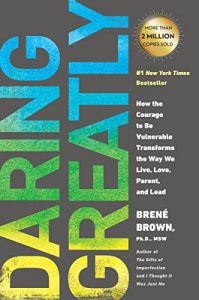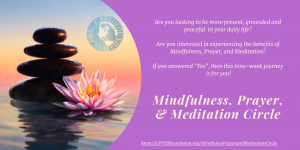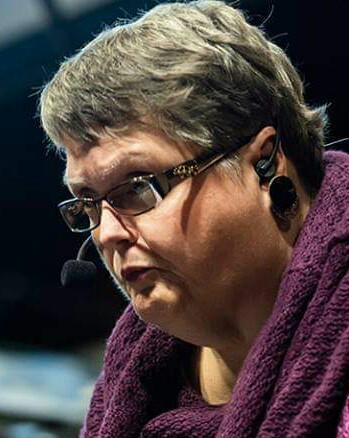Trigger Warning
The following piece deals with incest and is not suitable for all readers.
_____________________________________________________________________________________________________________________
Incest is a topic that most people would rather avoid. Thousands, if not millions, of children are violated by relatives who should instead watch out for their best interests.
The trauma bond is a deep faith held by the victim of incest that their perpetrator is not bad to them but is good. They believe this because of a cycle of abuse and reward. Because of the cyclical behavior of the abuser, the child forms an attachment to the perpetrator.
This article will explore how trauma bonding with attachment to the perpetrator plays an ungodly role in harming children.
The Trauma Bond
 Everyone, especially children, has an inborn need for acceptance. We will do almost anything to belong to a social group to avoid the bitterness that accompanies isolation from others. We need positive reinforcement from others to build healthy self-esteem and to feel we are worthy of love.
Everyone, especially children, has an inborn need for acceptance. We will do almost anything to belong to a social group to avoid the bitterness that accompanies isolation from others. We need positive reinforcement from others to build healthy self-esteem and to feel we are worthy of love.
Trauma bonds occur when there is an ongoing cycle of abuse with intermittent positive reinforcement. After each episode of abuse, the bond forms when the abuser acts lovingly and regretfully for what they have done; they do so to lure their victim into a sense of safety and need for their perpetrator. In the case of childhood incest, the abuser is someone well-known to the child, and since kids crave attention from adults, their perpetrator makes them feel special, knowing they are incredibly vulnerable.
This cycle of harm followed by being made to feel special creates a trauma bond that imprisons the victim leaving them unable to tell on their perpetrator. The very thought of telling on the abuser is overwhelming to the child, and in most cases, the child has no power to leave. The child forms an unhealthy bond almost set in stone and inescapable for them.
There are two ways to recognize a trauma bond. One is to follow your gut instincts. If you don’t feel right about what you observe, act on those feelings.
Second, you can learn about the signs of a trauma bond. Below are listed some of the signs to watch for to identify a trauma bond. When you ask questions:
- The child covers up or makes excuses for their perpetrator’s behavior
- The child lies to friends or family about the abuse they are suffering
- The child thinks their abusers behavior is their fault
- The child is secretive about what goes on between themselves and the perpetrator
If you recognize these signs in a child, it is time to talk to someone and bring the secret out. Don’t leave a child lingering in pain; please, tell an authority about what you have seen. Even if you are wrong, it is better to be sure you have done what you could to protect a child.
Attachment to the Perpetrator
 As sad as it sounds, children put in the position of depending totally on a perpetrator for all their needs leave them attempting always to please and appease their abusers. In the case of incest, the child has no choice but to look to their abuser for comfort and to meet all their other emotional needs.
As sad as it sounds, children put in the position of depending totally on a perpetrator for all their needs leave them attempting always to please and appease their abusers. In the case of incest, the child has no choice but to look to their abuser for comfort and to meet all their other emotional needs.
The child’s only hope is to keep their perpetrator happy, effectively meeting the needs of the abuser because they can decide if the child lives or dies. Loyalty to the perpetrator is also vital so that the child does not need to face abandonment by their loved one by going to prison and feel totally responsible for what has occurred.
These thought processes are perfect for the perpetrator as they want their victim to feel hopeless and helpless and to feel they cannot escape.
Although it is challenging to recognize attachment to the perpetrator and incest as a parent or other concerned adult, there are a few signs to watch for.
- You suspect and feel in your gut that something isn’t right
- The child regularly sees someone who seems overly attentive, giving the child gifts and taking them to special places
- The child does not play with or have friends
- The child isolates themselves when home or at school
- The child knows about sexual behavior beyond their years
- The relationship between the child and the relative feels secretive
Some of the signs of incest include:
- Anxiety
- Feelings of guilt
- Feelings of being unworthy
- Depression
- Isolating from others
- Poor self-esteem
- Becoming a perfectionist
As you can see, some of the symptoms of incest and attachment to the perpetrator overlap.
Example
Understanding attachment to the perpetrator and the trauma bond might be subjective and hard to conceive, so as an example, I will explain this phenomenon by telling of some of my own experiences.
My home life was not ideal with my mother’s alcoholism and gambling, plus my father was always working. I had no one to depend upon at home for my emotional needs and was vulnerable.
My relative, who traumatized me until I was fifteen years old, understood my dilemma and worked hard to build a firm foundation for me to form a trauma bond with him.
My abuser showered me with extraordinary attention to gain my trust, buying and making me pretty things and telling me no one would ever love me like him. Of course, being a child, I believed him, and when he was nice to me, I felt comforted and wanted.
However, when my relative was evil, I suffered from severe trauma that often left me with a bruised sense of self and feeling guilty. Immediately, he would begin to groom me again, never speaking of what had happened but treating me like a princess again.
I felt a mixture of fear for my life and total devotion.
It was highly confusing having him ignore what he had just done to me. When I got older, I knew what happened wasn’t right, but I couldn’t tell someone about it because then I would have no one.
My perpetrator’s torture was better than the void I faced at home.
Ending Our Time Together
Incest is an ugly subject, but to understand and defeat it, we must understand the dynamics set up by perpetrators and their victims. It is only through recognizing that something is wrong that we have any hope of rescuing children and giving them a better life.
If you suspect something is wrong between your child and a relative or anyone else for that matter, separate them from that person immediately until you have determined they are indeed safe people for your child to be around.
Carefully approach your child and gently probe for information. Remember, the child will attempt to protect their perpetrator, so do not be fooled. If your suspicions are confirmed or more potent, it is time to call the authorities.
Even if your child’s abuser is a close family member, your child’s life is at stake.
If you are a teacher, doctor, Sunday school teacher, or any adult who suspects child abuse, you must report it. You can either call your local authorities or go to the National Childhelp Hotline to get advice on what you can do.
Please, it is critical to report suspected child abuse.
“When I see people stand fully in their truth, or when I see someone fall down, get back up, and say, ‘Damn. That really hurt, but this is important to me, and I’m going in again’—my gut reaction is, ‘What a badass.’” Brene’ Brown


Are you a therapist who treats CPTSD? Please consider dropping us a line to add you to our growing list of providers. You would get aid in finding clients and help someone find the peace they deserve. Go to the contact us page and send us a note, and our staff will respond quickly.
Shortly, CPTSD Foundation will have compiled a long list of providers who treat complex post-traumatic stress disorder. When it becomes available, we will put it on our website www.CPTSDFoundation.org.
Visit us and sign up for our weekly newsletter to help keep you informed on treatment options and much more for complex post-traumatic stress disorder.
The Healing Book Club

The Healing Book Club, led by Sabra Cain, meets weekly to discuss a book about mental health issues. The current book that the club is reading is called Daring Greatly, written by Brene’ Brown, Ph.D. MSW.
Below is a brief look at the book taken from the product description on Amazon.
Every day we experience the uncertainty, risks, and emotional exposure that define what it means to be vulnerable or dare greatly. Based on twelve years of pioneering research, Brené Brown, Ph.D., MSW, dispels the cultural myth that vulnerability is weakness and argues that it is, in truth, our most accurate measure of courage.
Brown explains how vulnerability is both the core of difficult emotions like fear, grief, and disappointment and the birthplace of love, belonging, joy, empathy, innovation, and creativity. She writes: “When we shut ourselves off from vulnerability, we distance ourselves from the experiences that bring purpose and meaning to our lives.”
Daring Greatly is not about winning or losing. It’s about courage.
If you or a loved one live in the despair and isolation that comes with complex post-traumatic stress disorder, please come to us for help. CPTSD Foundation offers a wide range of services, including:
- Daily Calls
- The Healing Book Club
- Support Groups
- Our Blog
- The Trauma-Informed Newsletter
- Daily Encouragement Texts
All our services are reasonably priced, and some are even free. So, to gain more insight into how complex post-traumatic stress disorder is altering your life and how you can overcome it, sign-up; we will be glad to help you. If you cannot afford to pay, go to www.cptsdfoundation.org/scholarship to apply for aid. We only wish to serve you.
Mindfulness, Prayer, and Meditation Circle

Meditation can be an integral part of healing from trauma. Our 9-week self-study video course helps you integrate this wonderful method of grounding, centering, and focus. Join the Mindfulness, Prayer, and Meditation Circle today!

My name is Shirley Davis and I am a freelance writer with over 40-years- experience writing short stories and poetry. Living as I do among the corn and bean fields of Illinois (USA), working from home using the Internet has become the best way to communicate with the world. My interests are wide and varied. I love any kind of science and read several research papers per week to satisfy my curiosity. I have earned an Associate Degree in Psychology and enjoy writing books on the subjects that most interest me.





I am a 52 years old woman, and my parents are blood siblings brother and sister.
The wisdom you’ve acquired over many lifetimes is… although Ancient, represents itself in you RELATIVELY. Your Folks and their Folks Folks.